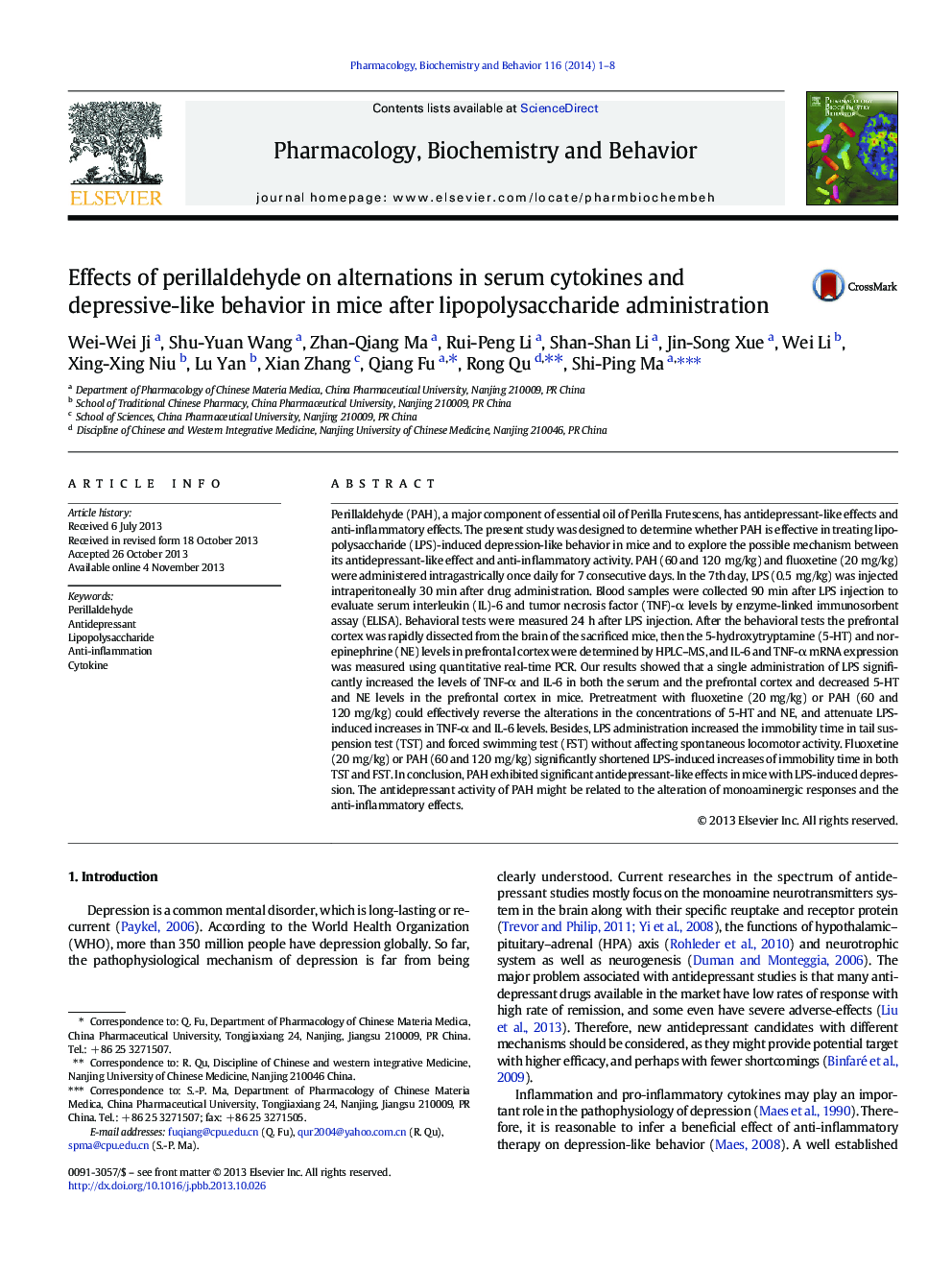| Article ID | Journal | Published Year | Pages | File Type |
|---|---|---|---|---|
| 2012999 | Pharmacology Biochemistry and Behavior | 2014 | 8 Pages |
•LPS-induced depressive-like behavior can be blocked by perillaldehyde.•Perillaldehyde prevents the monoaminergic response’s alterations in LPS-induced mice.•Perillaldehyde’s antidepressant activity is related to its anti-inflammatory effects.
Perillaldehyde (PAH), a major component of essential oil of Perilla Frutescens, has antidepressant-like effects and anti-inflammatory effects. The present study was designed to determine whether PAH is effective in treating lipopolysaccharide (LPS)-induced depression-like behavior in mice and to explore the possible mechanism between its antidepressant-like effect and anti-inflammatory activity. PAH (60 and 120 mg/kg) and fluoxetine (20 mg/kg) were administered intragastrically once daily for 7 consecutive days. In the 7th day, LPS (0.5 mg/kg) was injected intraperitoneally 30 min after drug administration. Blood samples were collected 90 min after LPS injection to evaluate serum interleukin (IL)-6 and tumor necrosis factor (TNF)-α levels by enzyme-linked immunosorbent assay (ELISA). Behavioral tests were measured 24 h after LPS injection. After the behavioral tests the prefrontal cortex was rapidly dissected from the brain of the sacrificed mice, then the 5-hydroxytryptamine (5-HT) and norepinephrine (NE) levels in prefrontal cortex were determined by HPLC–MS, and IL-6 and TNF-α mRNA expression was measured using quantitative real-time PCR. Our results showed that a single administration of LPS significantly increased the levels of TNF-α and IL-6 in both the serum and the prefrontal cortex and decreased 5-HT and NE levels in the prefrontal cortex in mice. Pretreatment with fluoxetine (20 mg/kg) or PAH (60 and 120 mg/kg) could effectively reverse the alterations in the concentrations of 5-HT and NE, and attenuate LPS-induced increases in TNF-α and IL-6 levels. Besides, LPS administration increased the immobility time in tail suspension test (TST) and forced swimming test (FST) without affecting spontaneous locomotor activity. Fluoxetine (20 mg/kg) or PAH (60 and 120 mg/kg) significantly shortened LPS-induced increases of immobility time in both TST and FST. In conclusion, PAH exhibited significant antidepressant-like effects in mice with LPS-induced depression. The antidepressant activity of PAH might be related to the alteration of monoaminergic responses and the anti-inflammatory effects.
